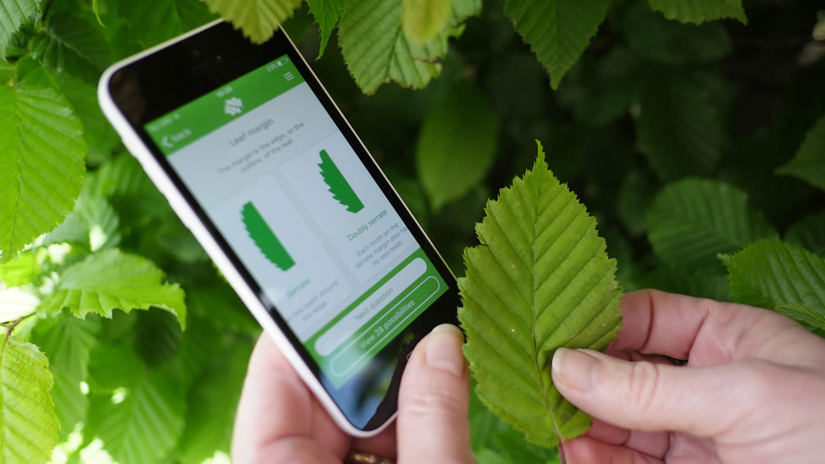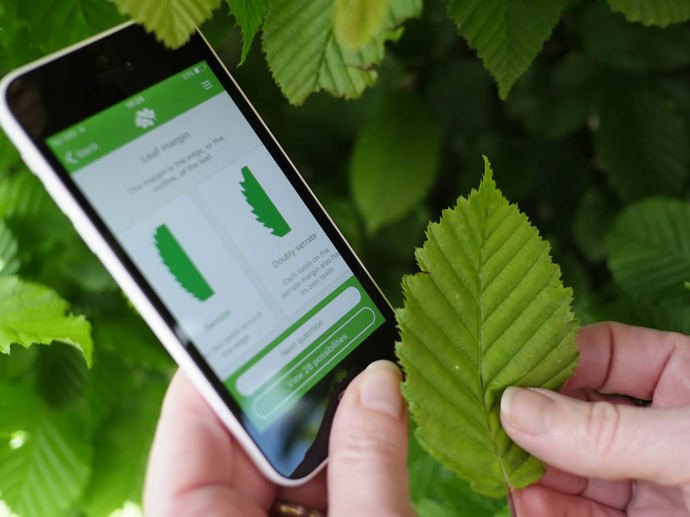Common names: sour cherry, tart cherry, dwarf cherry
Scientific name: Prunus cerasus
Family: Rosaceae
Origin: non-native
Acidic fruits that are adored by birds. This tree gives astonishing displays of blossom in spring along hedgerows and woods.
Common names: sour cherry, tart cherry, dwarf cherry
Scientific name: Prunus cerasus
Family: Rosaceae
Origin: non-native
Sour cherry is smaller than sweet cherry cultivars and can reach up to 10m high. It grows best in moist, rich soil as it requires more nitrogen and water than sweet cherries. The bark of the tree is reddish-brown and shiny, with peeling horizontal strips. The branches spread upwards and have smooth twigs.
Look out for: the stems of the leaves which have two yellow or red glands.
Identified in winter by: twigs which are hairless, as are the buds. Buds at the end of the stems are single or in clusters of 2–3.

Credit: Nature Photographers Ltd / WTML
The long, ovate leaves are dark green and glossy with an abrupt point at the tip. The leaf margins have small teeth around the edge. While the top of the leaf is smooth and glossy, the underneath can be downy.

Credit: Dieter Wanke / Alamy Stock Photo
Stunning white flowers occur in clusters of between two and six.

Credit: Nature Photographers Ltd / WTML
Fruit ranges from bright red to almost black and is round with a soft, fleshy layer.
Bird cherry (Prunus padus), cherry plum (Prunus cerasifera), wild cherry (Prunus avium). Sour cherry fruit is on shorter stalks compared to wild cherry fruit.


Download our free Tree ID app for Android and iPhone to identify the UK's native and non-native trees. It's an A-Z tree guide in your pocket.

Credit: Tim Gainey / Alamy Stock Photo
Sour, or tart, cherry is a deciduous shrub native to Asia and much of Europe. It is planted widely in the UK, and has also naturalised in hedgerows, copses and along wood-borders. It spreads by fruit or suckers, and can sometimes form dense thickets.

Credit: Pierre BRYE / Alamy Stock Photo
The fruit is eaten by many mammals and birds, often as soon as it becomes ripe.

Credit: Tim Gainey / Alamy Stock Photo
Historically, the fruit has been used medicinally to treat various ailments, including upset stomachs. Recently, research has begun to uncover the possibility that the sour cherry could be a new superfood – high in antioxidants, vitamins, minerals and melatonin.
Sour cherries are self-fertile and so do not need another cultivar to produce fruit.
Sour cherry trees are cultivated for their edible fruit though they are rather sour when eaten raw. There are several cultivars grown commercially, including the dark morello cherry and the lighter red amarelle and montmorency cherry.
Because they’re so sour, they tend to be cooked or preserved and the syrup is used in drinks and liqueurs. Sour cherries have a high melatonin content and it has been suggested that the fruit is useful in alleviating sleep problems.
The sour cherry has a number of other uses. The seed contains an edible oil which is used in cosmetics, the stem produces a gum which can act as an adhesive, while a green dye can be obtained from the leaves and a dark grey to green dye from the fruit.
A number of traditional medicinal applications can also be extracted from the tree. Bark from the root was soaked in water which was then used as a wash for ulcers and sores; while an infusion of the bark has long been a remedy for fevers and coughs. As with all cherries, the seed contains substances which in water break down to form cyanide/prussic acid, which though highly poisonous, can – in small quantities – stimulate respiration and improve digestion.

Credit: Klein & Hubert / naturepl.com
Sour cherry suffers from fewer pests and diseases than sweet cherry trees. The main threat is from birds removing the fruit. It can also suffer from damage by aphids and caterpillars.